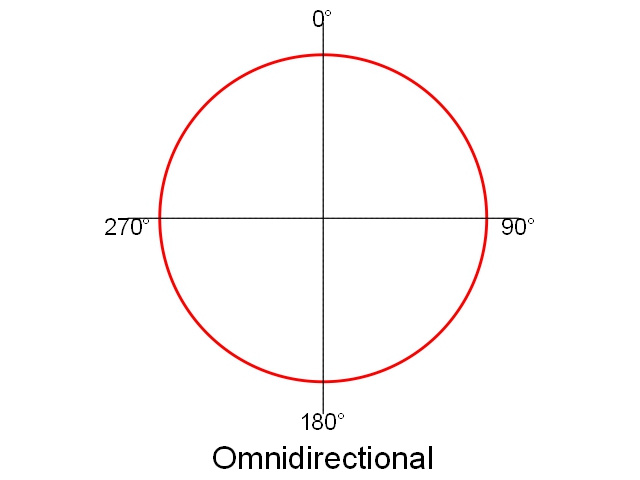Microphones
This is just a short overview of microphone types and is not intended as a definitive technical work, this would take several books. The aim is to give you an idea of what each type is suitable for and how they work. There are three main types of microphones, Dynamic, Condenser and Ribbon, each can have different a polar pattern that defines the area of sound pick up. Selecting the correct type can improve audio quality, whether you are performing live or recording, plus the fragile nature of some types needs to be considered.
Dynamic Microphones
Dynamic microphones are normally cheaper, more robust, have a wide dynamic range and are the most commonly used for on stage work. Dynamic Mics include a diaphragm, coil and magnet, when a sound is picked up by the diaphragm it moves the coil inside the magnetic field creating a electrical current in the coil, this is an electrical signal which almost exactly replicates the sound picked up by the diaphragm. This electrical signal is then amplified and reproduced through a PA system or sent to a recording device. Dynamic Mics are very good for live vocals, low frequency sounds like kick drums and general stage sound reinforcement.
As mentioned the robust nature of these microphones make them ideal for stage work, but while they will stand some fairly harsh treatment, severe knocks can damage the internal parts, spoiling the sound or rendering them unusable.
The output signal level from a Dynamic Microphone will generally match most mixer inputs with a specific microphone channel. No power feed is required for this type of microphone and the mixer phantom power supply should be switched off, if one exists.
The Basic internal construction of a Dynamic microphone is shown in Diagram the accompanying diagram and in all but the most basic types connection is via a male XLR socket.
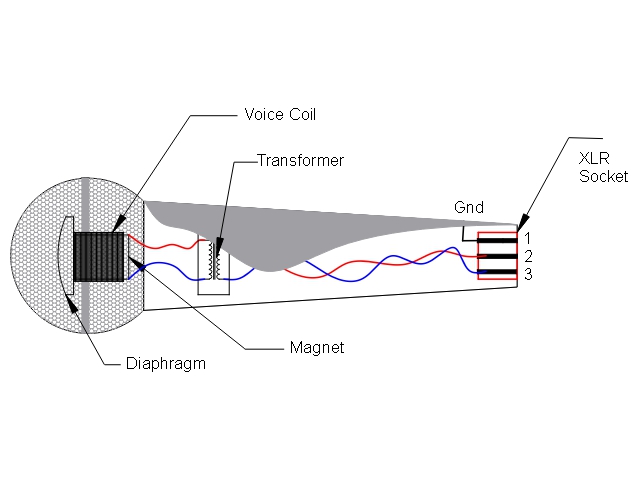
Condenser Microphones
Condenser Microphones are usually more expensive, sensitive and have a better frequency response than Dynamic types. They will require power either from a battery or phantom power provided by a mixer or external power supply. Condenser Mics use the varying charge on delicate plates to provide an electrical signal. One is exceptionally thin and vibrates in sympathy to sound waves hitting it. This minute signal is then normally boosted by a pre-amp circuit inside the microphone. Condenser Mics are often used for studio vocals and are also widely used for the high frequency reinforcement for cymbals and other percussion.
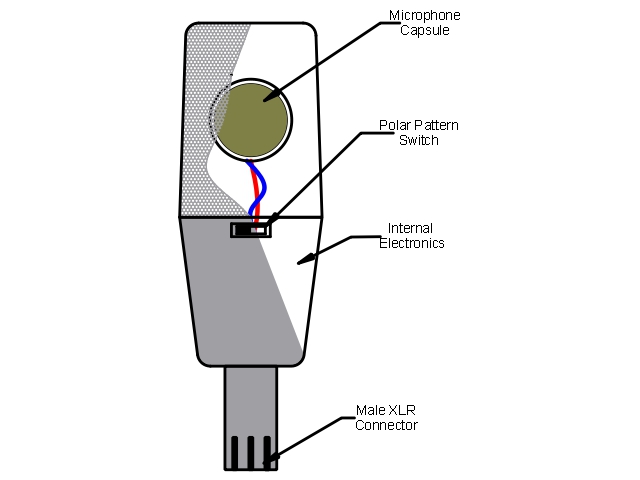
Ribbon Microphones
Ribbon microphones are use generally for studio recording, they have excellent response characteristics, but are fragile and therefore not generally suitable for stage work. There are of course exceptions to this rule. It is suggested that they produce a warm sound, associated with earlier recording styles. The electrical signal produced by the microphone is very low and requires significant amplification. The microphone works by placing a ribbon like foil between electromagnetic poles, with the incoming sound vibration the foil. This produces the small electrical current output for further amplification.
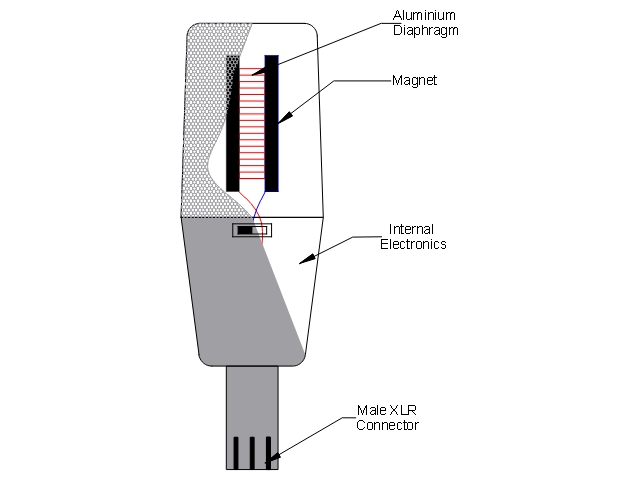
Balance or unbalanced
Nearly all modern Mics have a balanced output. This is useful if the cable runs are long, since the balanced cable will help to reduce external interference from lighting and so on. They can be connected to an unbalanced input on amplifiers and mixers, for this you need to wire the interconnection lead differently You can link through here to various connection options.
Wiring Audio and Lighting Connectors >
Vocal & Speech
Almost all the categories of microphone can and are used for vocal work, as mentioned before Dynamic Mics are generally used for stage and more often Condenser and ribbon Mics in the studio. See further in this article for different polar patterns to achieve the best reproduction. These follow the vocal format generally, although some are specifically produced with limited bandwidth to improve clarity, station announcing is an example, but not necessarily a good one!
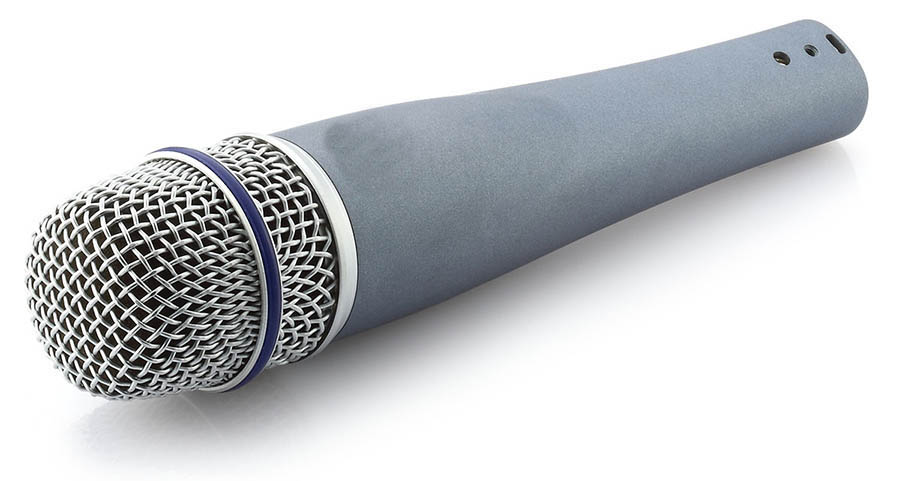
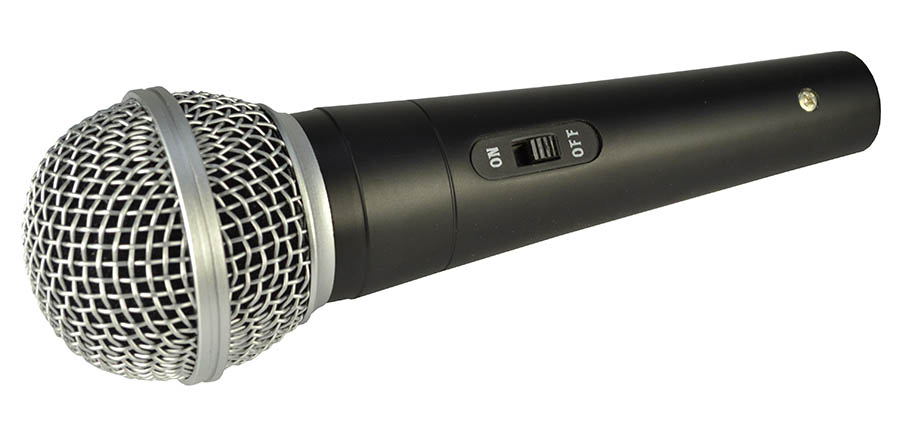
Boundary
Boundary mics are invariably omni-directional and can be either condenser or dynamic, but generally the former. Some times the polar pattern is biased with more sensitivity at the front. They are used for amplifying conference, by placing them is the center the meeting area, or stage pick up with the microphones strategically placed around the stage area.
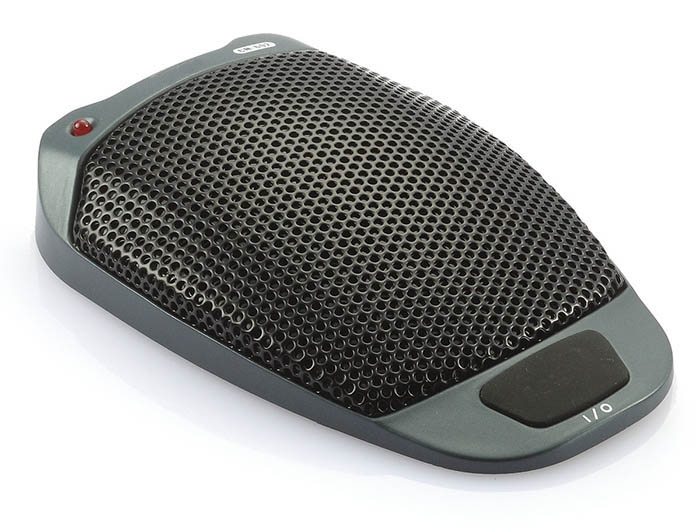
Lavalier
Also known as a Tie Clip Mic, these are used extensively for TV recording, as they can be made very discrete, with very tiny capsule inserts. They often use a form of capacitor microphone call Electret and may require a battery or remote supply pack. This style of Mic can also be attached to a headband for stage performances, where the microphone is invariable connected to a wireless transmitter.
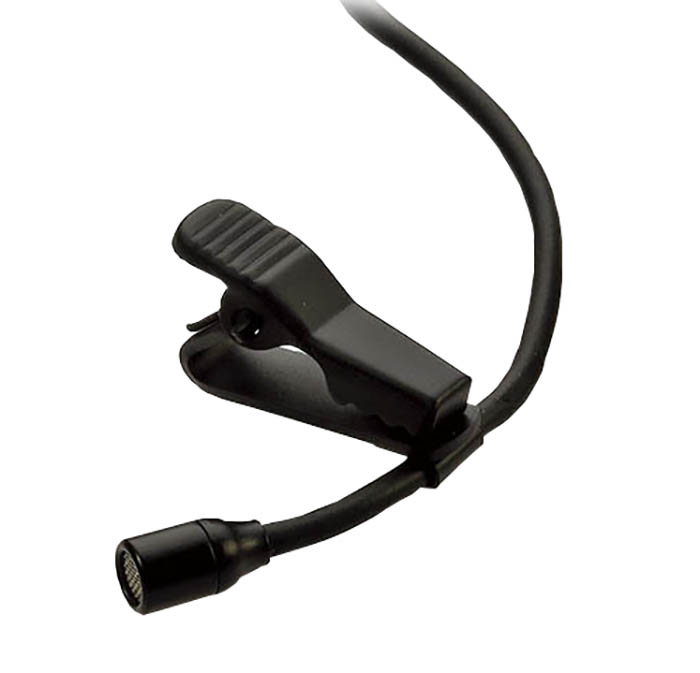
Drum and Percussion
Bass drum Mics are mostly dynamic types, since they are more robust and cymbal Mics are often condenser types. There are no hard and fast rules here, but if you buy a set of drum mics you would generally receive a mix of types.
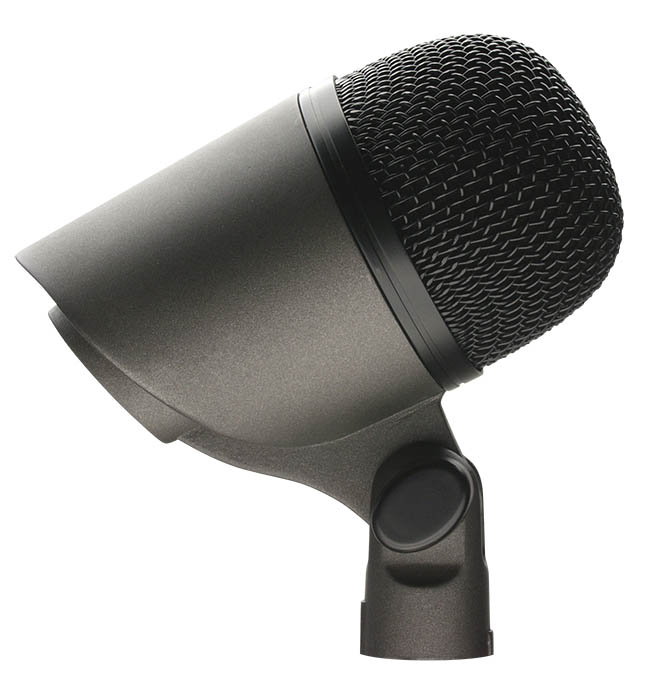
Instrument
This a subject on its own and instrument mics would include all types. Keep in mind that some types will require phantom power, so this will either need a separate phantom supply or be available for your mixer. Also keep in mind that some mixers have an all or nothing switch for phantom suppliers and this may not suit all the types on other channels.
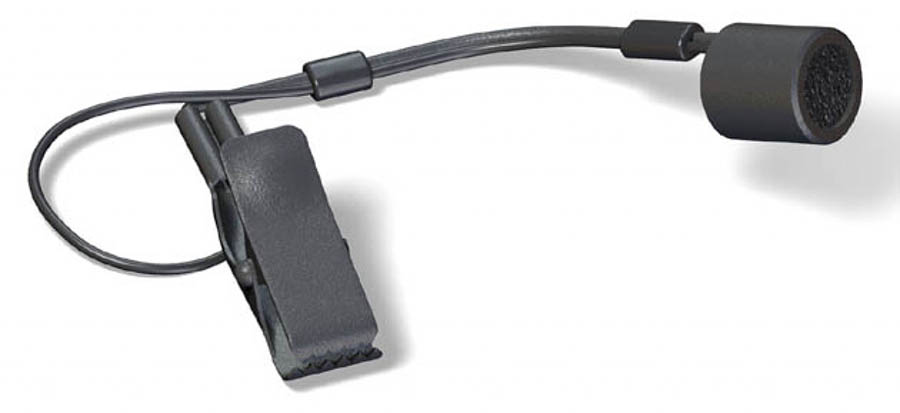
Shotgun
This style of mic is for a very specific use and as can be seen form its pickup pattern further on in this text, is extremely directional. Generally the longer it is the more directional the response, you can also fit a cover to reduce wind noise. Its classic use is for interviews and long range pick up for sound recording, bird calls for example.
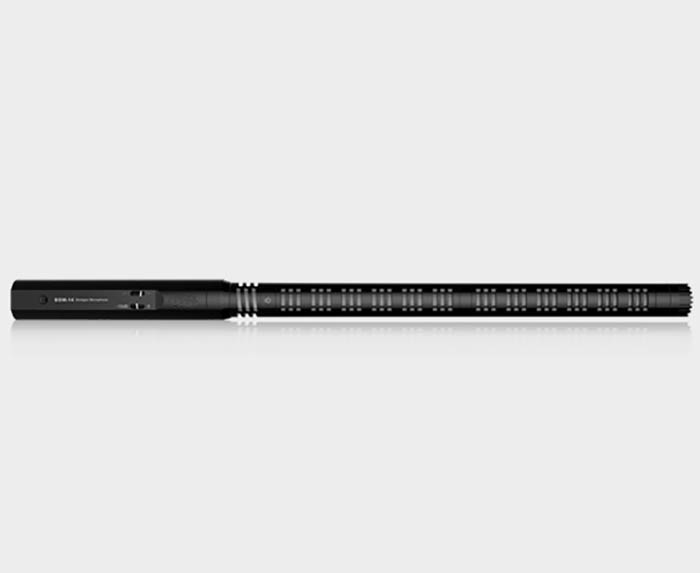
Polar Patterns
Polar patterns define the area around a microphone that is sensitive to sound. This is an important factor in choosing a microphone, since understanding where the microphone “listens” to the sound will help you eliminate unwanted noise, reduce feedback for live performances and give you optimal sound quality.
Some microphone types are listed here with there common use, cardioid types are sometimes called unidirectional and the Shotgun type is also unidirectional.
Cardioid Microphones
You can see from the accompanying heart shaped diagram why this pattern has been call cardioid. This is particularly good style for vocalists, it is very directional but still picks up well enough for the vocalist to move, getting too close to the microphone, will cause a rather deep boomy sound, so some care has to be taken. As there is almost no pickup directly behind the Mic, fold-back monitors can be placed quite close to the entertainer, behind the microphone.
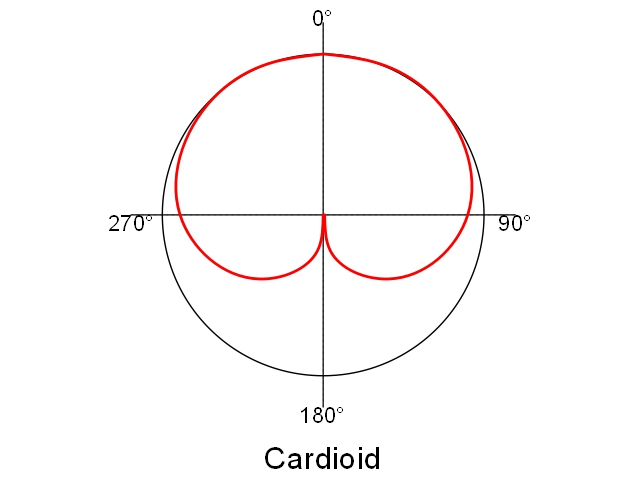
Supercardioid and Hypercardioid Microphones
These offer an even more focused directional reception area, but have a rear lobe, making it difficult to use with sound fold-back monitors on stage, but excellent for reducing feedback from the main front of house system.
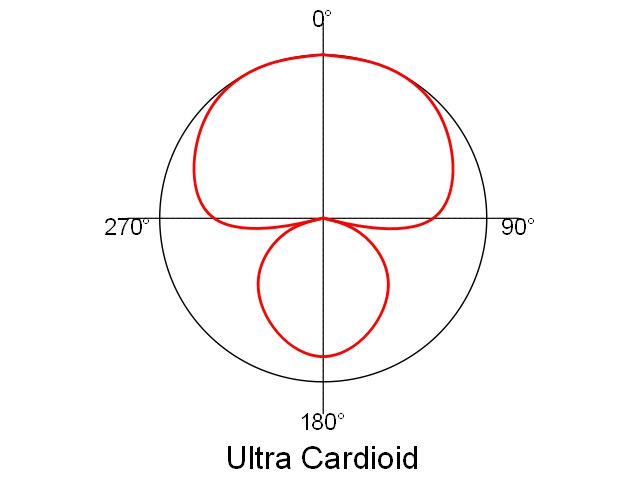
Shotgun Microphones
Shotgun Mics have very narrow extended polar patterns and their tube like design is specifically designed for long range very directional pickup. This is the kind of Mic you would use for interviewing in noisy places, capturing sporting events or combined with a camera to pick up specific sounds related to the video.
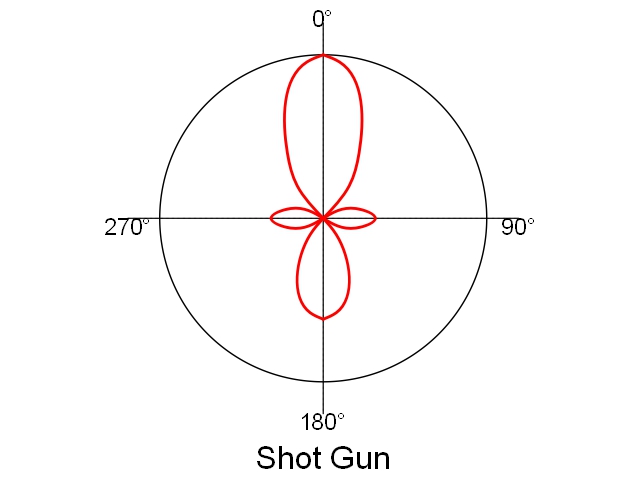
Bi-Directional or Figure of 8
These Mics pick up sound equally from the front and the back, sound from the side is mostly eliminated. This polar pattern is useful for recording stereo, capturing multiple instruments. You can also pinpoint the sound of one vocalist or instrument whilst canceling out any sound either side as long as there is not sound directly behind the microphone.
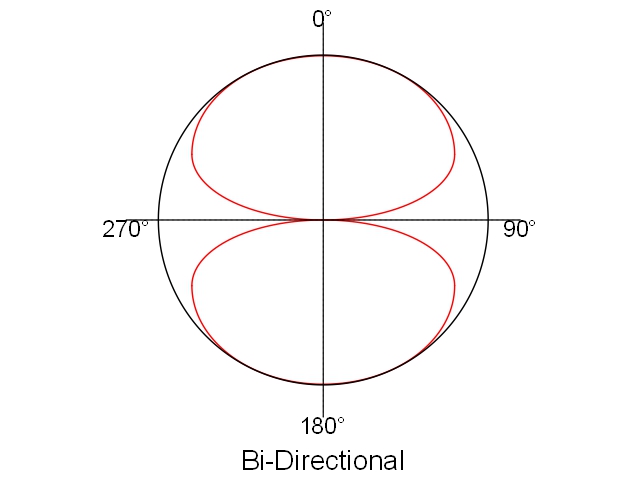
Omnidirectional
Picks up sound equally from any direction around the microphone. These are great for picking up groups or areas of sound like choirs, orchestras and grand pianos. But these cannot be used to pick up one sound in favor of another.
